There are some foods that I generally consider in the don’t-try-this-at-home category. Yogurt is one of them. Messing around with bifidus, acidophillus, lactobacillus — plus dairy products — just seems like asking for trouble.
But never say never.
With the new year, one of the things I’m trying to do is to eat more yogurt. And not that gelatinized pink stuff. There are plenty of good fresh yogurts available at most grocery stores. Even Costco and Trader Joe’s in my area carry excellent whole milk yogurts, tangy with live cultures. Over the weekend, I found myself staring at the dairy case at Costco, faced with an epic decision. The milk comes packages of two one-gallon jugs. The yogurt comes in shrink-wrapped, two 32-ounce tubs at a time. Have you ever come home from bulk buying groceries only to find that all the fresh food you’ve bought cannot fit into your refrigerator? I’ve been there, and I don’t want to shed those tears again.
Then a lightbulb went on over my head: you can make yogurt out of milk, but you can’t make milk out of yogurt.
I know. My rule.
As terrifying as the prospect of breeding live bacteria in milk and then eating the result, I’ve also been kind of fascinated with the idea. Years ago, I watched Huell Howser, who passed away earlier this week, interview the Yogurt Man on Southern California public television. Then, Francis Lam wrote this handy tutorial about how to make yogurt on Salon. I read it with some curiousity. And then went to buying Straus and Brown Cow. After all, there are many delicious yogurts available: nonfat, fruit on the bottom, cream on top, Greek, French. A few years ago, Trader Joe’s even carried a matcha flavored yogurt. You know that green tea tart fro-yo they serve at Pinkberry and shops like that? Yeah, that one, just not frozen. Full of grassy green goodness, plenty of zest, just a little bit of sweetness. But then, TJ’s had to go and cancel it.
For the January Let’s Lunch, Pat at The Asian Grandmother’s Cookbook threw down the challenge to try a new or intimidating recipe. How could I walk away from that? Using Francis’ article as my guide, I set out to DIY yogurt, adding a little Asian fusion twist. So here goes…
How to Make Your Own Matcha Green Tea Yogurt
First, I prepped some clean 1/2 pint Mason jars
I poured 3 cups of 2% milk into a saucepan and heated it, stirring constantly.
Meanwhile, I made a mixture of 1 1/2 T. yogurt with a little milk.
I mixed the yogurt mixture with the heated milk and poured into Mason jars.
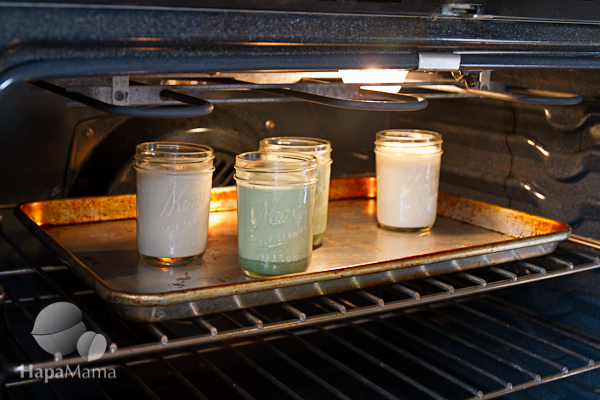
Then I placed the jars into a barely warm oven and left them there for several hours. I saw the Yogurt Man do this, and according to Francis’ article, the yogurt just makes itself.
That’s when things started to go wrong.
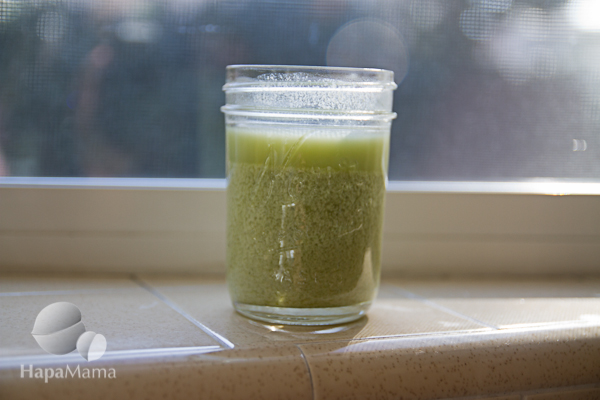
After a few hours, I noticed the matcha flavored jars were separating, with the darker green liquid layer at the bottom. That bothered me, so I decided to give one of the jars a stir… and got this green, curdled mess.
I consulted Google and found another great DIY yogurt tutorial at Kitchen Stewardship, which explained that disturbing the yogurt while it’s culturing leads to… curds. Yuck.
The rest of the jars, I left in the oven for a few more hours, as the mixture was still far too runny to be considered yogurt in my book. When they seemed to be setting, I pulled them out and let them sit on a warm spot on my kitchen counter. But those jars never set up either. Consulting Kitchen Stewardship again, I realized that I did not wait for the milk to cool down to about 100 degrees before adding the probiotic starter, a process which takes an estimated hour and a-half. Re-reading Francis’ article, I see that he also recommended letting the milk cool “until you can hold your finger in it for 10 seconds without it getting too uncomfortable”. In other words, I killed all the good bacteria before it had a chance to proliferate.
But I’m not one to back down from a challenge, even when it potentially involves my own gastrointestinal well being. The next day, I set out to repeat my yogurt making experiment, making three key changes: I bought a new tub of yogurt as a starter, I let the milk cool to the appropriate temperature, and I set the oven to its “Proof” setting (intended to provide an optimal temperature for dough to rise, but I figured what’s good for the yeast is good is good for the lactobacilli, right?).
After six hours, most of my jars were beginning to set quite nicely, with only one jar that remained liquidy. I don’t think I added enough starter to that container.
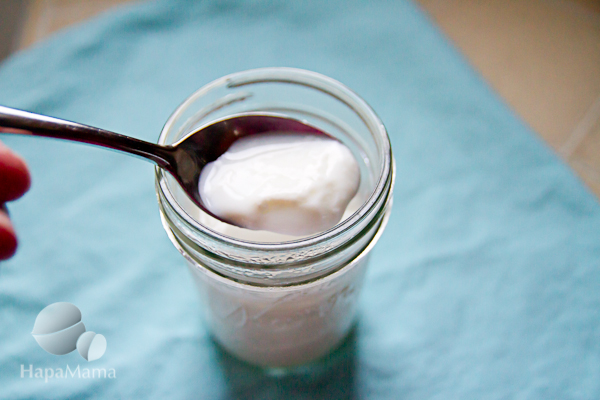
The finished yogurt had the texture of soft custard, and while it smelled tangy, tasted quite mild.
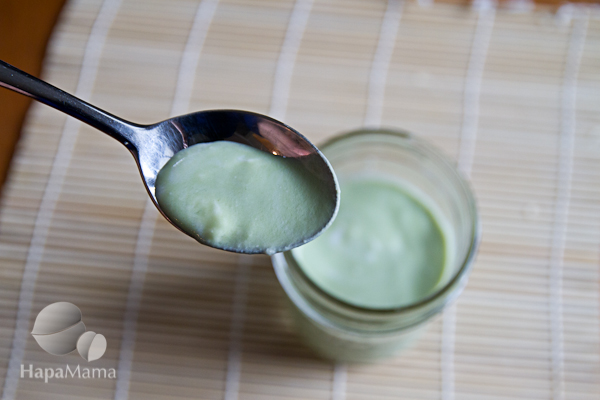
But the green tea? I decided this time that I would just make a slurry of matcha powder and water and stir it into the finished yogurt. All the stirring softened up the mixture a bit, and created some unattractive lumps, although it tasted delicious.
Will I be making my own yogurt again in the future? Maybe, because I do like the freshness, the low cost and above all, the virtuous feeling of doing-it-yourself. However, I don’t think any of my favorite dairies are in danger of losing my business ;)
Have you ever cultured yogurt? Do you have any suggestions on how to better recreate matcha green tea yogurt at home?
For more delicious Let’s Lunch stories and recipes, follow #LetsLunch on Twitter


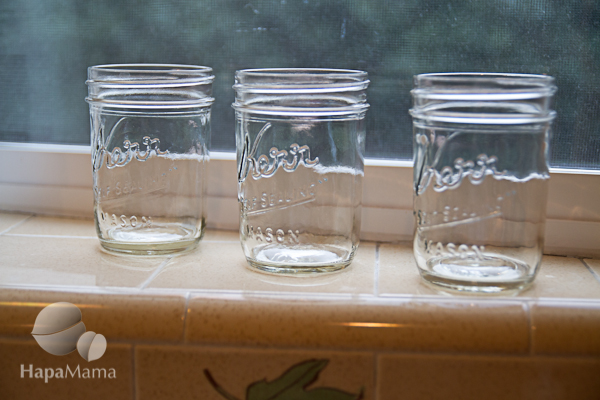
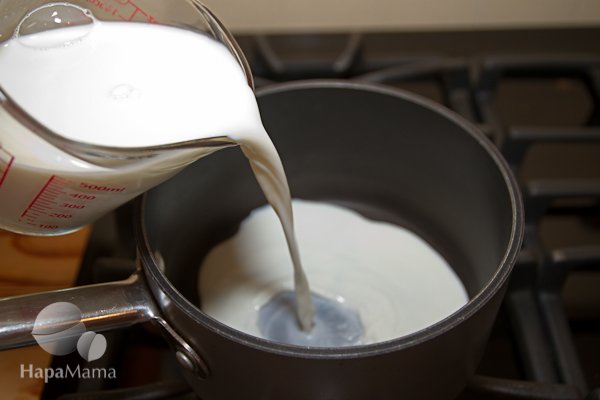
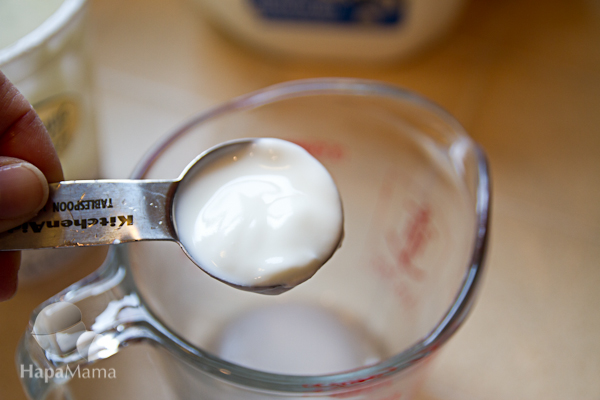

Lol, you’re braver than moi! Kudos on getting that yogurt done :)
I’m officially intrigued to this process, and never knew there was a “proof” setting on my oven. That woulda been helpful to help my pizza dough rise a week back :).
Wonderful! I plan to try this, so I know that I can do it. Having seen yogurt-making kits/contraptions for years, I foolishly assumed that one would need same in order to make yogurt at home. What exactly did I think home cooks in South Asia have been doing for milennia, or did they order ancient kits from an ancient version of Williams Sonoma. Probably not. My oven does not say Proof, but it does have a Warm, which I have a hunch would be just the thing for this process. I love that this makes a modest batch of 3 jars.
I am so proud of you for not giving up, Grace. Brava! And to answer your question, Yes!, I have been making homemade yogurt for many years now, but mine I consider “drinkable yogurt,” which my family has come to love.
I used to use a heating pad to incubate my yogurts: I’d place my jars of yogurt on the heating pad, set on low, and then cover them with a clean, heavy bathtowel. They’d incubate for about 8 to 10 hours. (I used to save my spagghetti sauce jars for this (well washed, of course).
If I planned to sweeten and flavor my yogurst ~ such as coffee or chocolate or vanilla flavors ~ I would add my flavoring while my milk was hot. And, believe it or not, I’ve had great success with my yogurst. Yum!
Loved that you suggested flavoring with Matcha Green Tea. I need to try that next. :)
Thank you, Virginia! I’m encouraged to hear you’ve ben making yogurt successfully for many years. Great tips on how to flavor yogurt. I’m itching to make Meyer Lemon flavor soon. Let me know if you have better luck incorporating Matcha than I did. I think next time, I will dissolve the powder in milk instead of water.
Great tip, Virginia! I think I’ll be making yogurt again. With Meyer Lemons coming into season, I’m dreaming of making a batch of lemon yogurt, although I’m a little worried about the acidity curdling the yogurt mixture.
You’re making this look easy, Grace! I may have to give it a try. I buy non-fat vanilla yogurt each week to eat with granola. It would be great to make my own.
Hi Grace, excellent! Don’t laugh, but I had been asking my husband for a yogurt machine (basically an incubator) for years– and finally got one for my birthday this year! I’ve made a few batches so far and had one turn out like your first attempt– glad forVirginia’s advice above– I think it was when I added cold strawberry jam to my mixture. For the matcha, which I plan to try, I would make a simple syrup and add the matcha to it, then incorporate to the mix. Have fun!
That’s a good idea, Linda. Do you think the sugar syrup will work as an emulsifier?
I used to make my own yogurt (oh when time wasn’t at such a premium) and it left store bought in the dust! It did take some tweaking to get it right but I never ventured to make flavored yogurt. This I gotta try. Kudos to you for rising up to the challenge!
Great theme this month, Pat! I had no idea what to do at first, and I’m glad for the inspiration to try this. Thanks again for organizing.
I’ve thought about doing that too but have always been too chicken. I love the idea of doing it with matcha, though; I imagine it being delicate and delicious!
Good for you–I’m impressed!
What an interesting post. I’ve never made yogurt before, but have been curious to try. You made this seem so easy. My son loves green tea and I was thinking of doing this for him. But he only drinks soy milk. Is it possible to use soy milk for this recipe? Thanks for sharing the instructions!
I haven’t tried making yogurt with soy milk, but they do sell soy yogurt, so it’s possible. You would probably want to start with a soy yogurt as starter, or buy probiotics separately so you don’t get residual dairy in your yogurt. Also, stick with Virginia’s recommendation that you add the matcha slurry (and maybe some simple syrup) to the milk while it is still warm. Good luck, and I’d love to hear how it turns out.